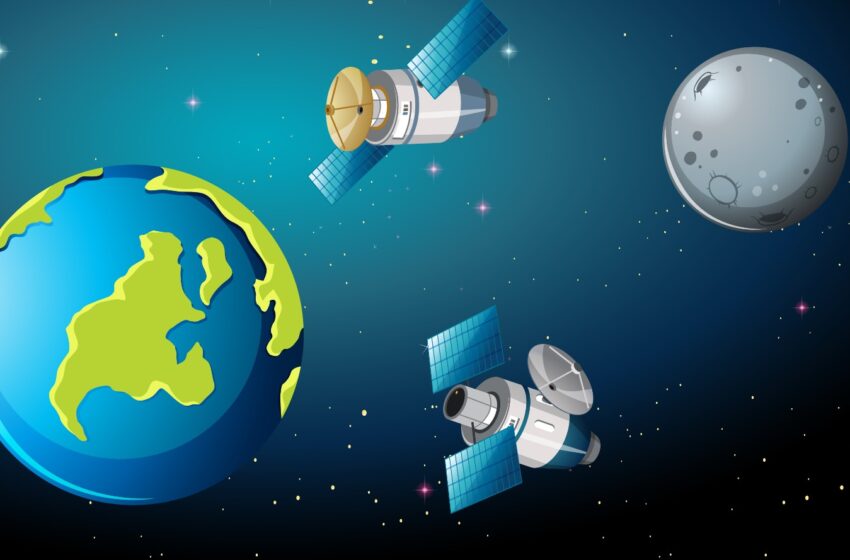The Advent of Low Earth Orbit Satellites in Global Internet Coverage

In recent years, the quest for universal internet access has taken a significant leap forward with the advent of Low Earth Orbit (LEO) satellites. This burgeoning technology promises to revolutionize global internet coverage, especially in remote and underserved regions. By creating a network of satellites much closer to the Earth than traditional geostationary satellites, LEO systems offer lower latency, higher speeds, and a more equitable internet landscape. This article delves into how LEO satellites are changing the game for global connectivity and what this means for the future of internet access across the globe.
Bridging the Digital Divide with LEO Satellites
A significant portion of the world’s population still lacks reliable internet access, hindering economic growth, education, and healthcare advancements. LEO satellites aim to bridge this digital divide by providing high-speed internet to the farthest reaches of the planet, including rural areas, remote islands, and developing countries where laying fiber-optic cables is not feasible or economically viable.
The Technical Edge of LEO Satellites
LEO satellites orbit approximately 500 to 2,000 kilometers above the Earth’s surface, far closer than the 35,786 kilometers orbit of geostationary satellites. This proximity reduces the time it takes for data to travel between the user and the satellite (latency), making high-speed internet and real-time applications more accessible worldwide. Furthermore, the deployment of large constellations of LEO satellites ensures comprehensive coverage, eliminating geographical disparities in internet access.
The Key Players and Projects
Several high-profile projects and companies are leading the charge in the LEO satellite sector. SpaceX’s Starlink, OneWeb, Amazon’s Project Kuiper, and Telesat are among the most notable, each planning to deploy thousands of satellites to create a global internet coverage network. These initiatives have garnered significant attention and investment, signaling a strong belief in LEO technology’s potential to redefine global connectivity.
The Impact on Global Internet Coverage
The deployment of LEO satellites is expected to have profound implications for global internet coverage:
- Improved Connectivity: LEO satellites will provide high-speed, reliable internet to underserved areas, dramatically improving global connectivity and enabling access to digital services and information.
- Economic Growth: Enhanced internet access can drive economic growth, opening new markets for e-commerce, facilitating remote work, and promoting innovation in digitally underserved regions.
- Educational Opportunities: Access to educational resources and online learning platforms will be vastly improved, offering remote and rural areas the tools needed for education and skill development.
- Healthcare Advancements: Telemedicine and access to online health resources will become more accessible, improving healthcare outcomes in remote areas.
Challenges and Considerations
Despite the promising benefits, the rollout of LEO satellite networks faces several challenges. The potential for space debris, the environmental impact of launching thousands of satellites, and regulatory hurdles are significant concerns that need addressing. Additionally, the cost of deploying and maintaining these satellite constellations poses financial challenges, although costs are expected to decrease as the technology matures and economies of scale are realized.
The Future of LEO Satellites in Global Connectivity
As LEO satellite technology continues to evolve, its role in global internet coverage will likely expand, offering unprecedented opportunities for connectivity. Innovations in satellite design, propulsion, and deployment strategies will further enhance the efficiency and effectiveness of LEO networks. Moreover, as global demand for internet access continues to grow, the importance of LEO satellites in meeting this demand cannot be overstated.
Conclusion
The advent of Low Earth Orbit satellites marks a pivotal moment in the quest for universal internet access. By providing high-speed, reliable connectivity to the world’s most remote areas, LEO satellites have the potential to significantly reduce the digital divide. While challenges remain, the ongoing efforts of key players in the industry and advancements in technology suggest a bright future for global internet coverage, powered by the next generation of satellite technology. As we look to the skies for solutions, the promise of LEO satellites offers a hopeful glimpse into a more connected and equitable world.
(Nominate Now: Join us to spotlight your achievements! Be part of the elite in the business and finance community. Exciting opportunities await!)







